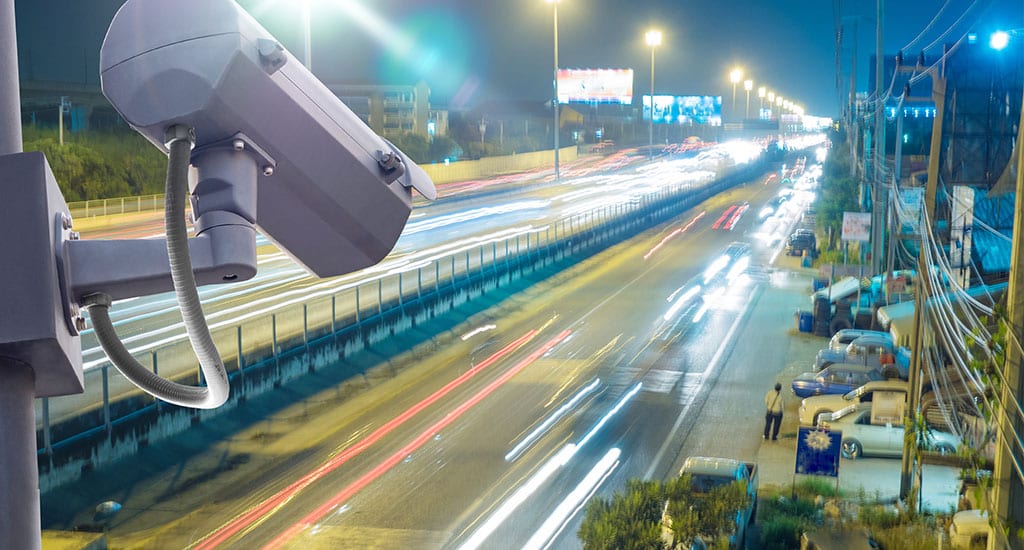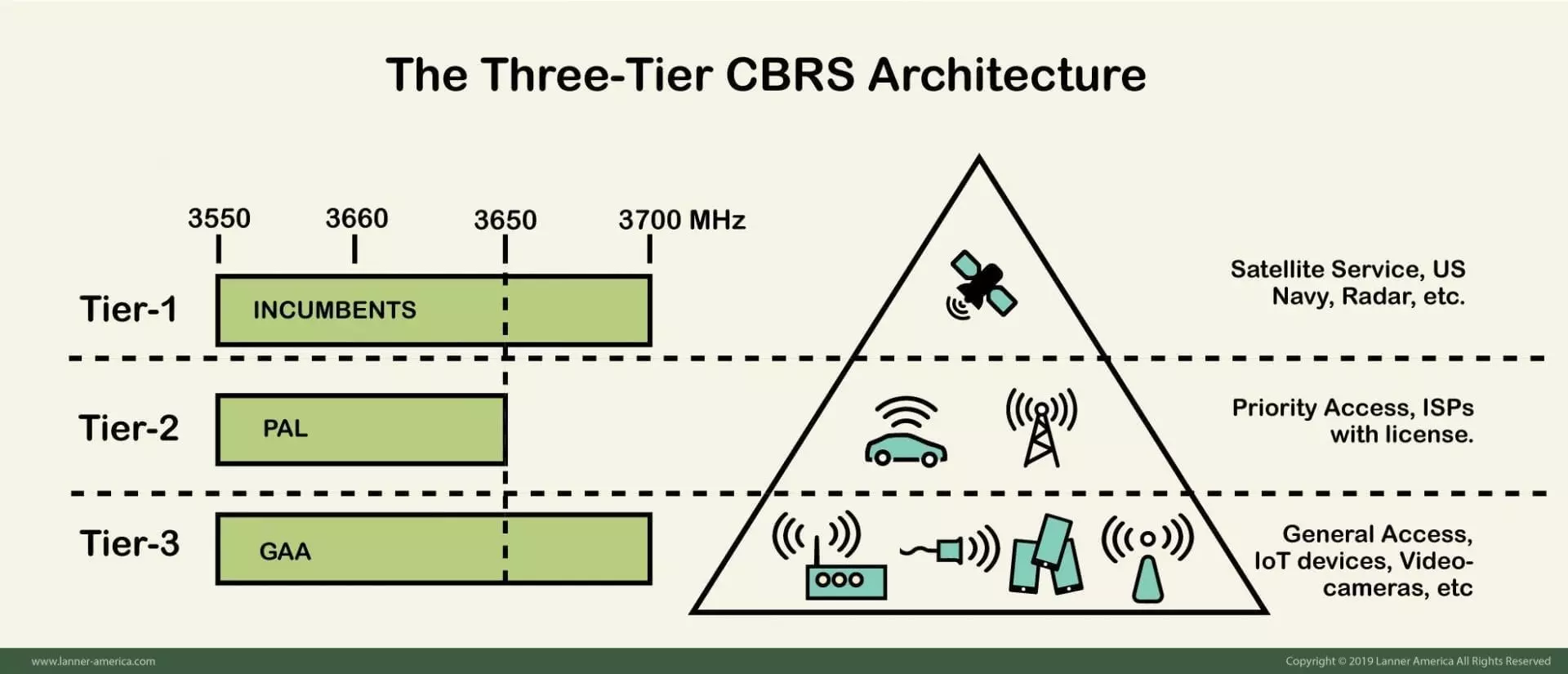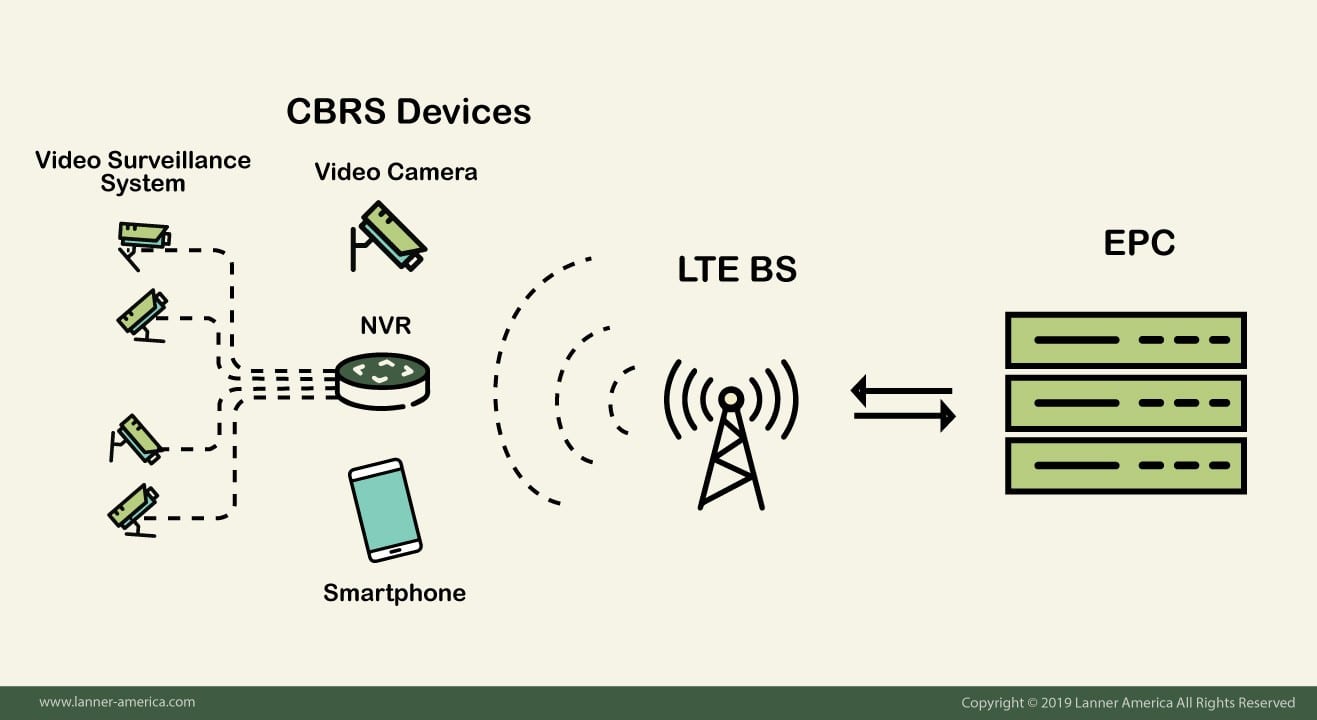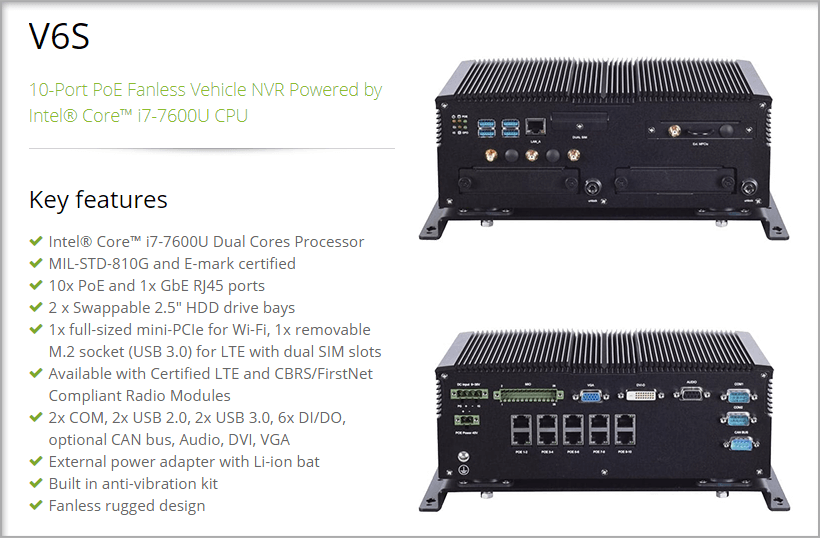
Private LTE is capable of delivering a low-latency and secured connection to those remote and dense areas. For this reason, this technology will create opportunities for the security industry. Some real-case applications for Private LTE in video surveillance can be in smart cities or rural areas.
In the following article, we will take a closer look into what is missing today, how can private LTE improve video surveillance and some potential applications.
Dedicated Remote High-Definition Video Surveillance. What is Required?
Nowadays, remote video surveillance is deployed through fiber optics or via a commercial 4G network.
Deploying fiber optic cable in remote or broad areas only for video surveillance is never the right solution. The cost can be extremely high, and it can be impossible to deploy in some places such as cities or extreme environments. In cases like these, wireless communication is the only viable option.
WiMAX or 4G-LTE can be good alternatives, but they require the use of a commercial network. These networks usually do not provide the security, coverage, and throughput that high-definition video surveillance in remote areas need.
Video surveillance in remote and broad areas can be quite challenging. In places such as entire cities or rural areas, it can be challenging to avert crime, vandalism, and even terrorism. We need speed, security, and full coverage. A lower video definition can be transferred much more quickly, as compared to a higher definition recording. But the challenge is that in wide areas, low definition videos are useless.
Keeping an eye on distant objects, maintaining focus and resolution, requires the support of UHD and Full-HD. And to keep an eye on everything, we need to stream high definition video in real-time. Shooting video in extreme outdoor situations can be quite challenging. What is required?
- Support of Full-HD or UHD
- High throughput capacity
- Ultra-low delay
- Wireless
- Strong security
- Mobility
How can Private LTE Improve Capacity and Extend Coverage for Video Surveillance?
Nowadays, cameras and video recorders are based on IP. These video surveillance IP systems are always connected and open to the Internet. Being able to connect to the Internet opens a lot of possibilities for video surveillance in wide and remote areas. For example, with AI and cloud-based services, the footage collected by these cameras can be sent to the cloud for specific analytics, such as biometric facial recognition, license plate recognition, or unusual behavior examination.
But having all these cameras connected to the cloud and sending large amounts of HD video streaming and analytics requires a new level of the network— this is where Private LTE comes into place. The technology that will open new opportunities for the security industry.
But what exactly is Private LTE?
The Private LTE is strongly related to CBRS (Citizens Broadband Radio Service), which was introduced by the FCC. CBRS allows the usage and sharing of the 3.5 GHz (3550 MHz to 3700 MHz) band within the U.S. CBRS has a wide broadcast band of 150MHz which has been made available and open (unlicensed) to “citizens” and other commercial entities.
CBRS uses the standard LTE technology through Band 48. This frequency band is an excellent option for services that require ultra-low latency and high capacity, such as video surveillance. The CBRS offers 80-100MHz for the “unlicensed Private LTE,” which works similar to WiFi.
Below is a diagram with the three-tier CBRS architecture. CBRS works with three tiers; the lower is the GAA (General Access), the PAL (Priority Access with License), and Incumbents (the highest priority such as US Navy and Military).

Private LTE’s faster and broader coverage network will provide faster streaming and better video quality. Other benefits that Private LTE can bring to video surveillance?
- Better security. Private LTE keeps all data local, much like WiFi.
- Higher capacity. High throughput and low latency allow full-HD and UHD in various devices at the same time.
- Optimized services. QoS and bandwidth can be tailored for video surveillance services and applications.
- Improved range. Private LTE allows longer signal ranges as compared to other wireless technologies. It will enable 4x coverage compared to WiFi. LTE’s range can help video surveillance in broad areas like cities and rural sections.
- Mobility. Thanks to private LTE, mobile video surveillance can be possible. The technology allows seamless handovers and faster-moving users.
Private LTE brings similar benefits to the mobile or in-vehicle video surveillance as well. Aerial video surveillance systems such as drones or emergency vehicles could use private LTE within a reasonable coverage area to stream high-video definition from aerial views or extreme places.
Video Surveillance Applications with Private LTE
Unlike WiFi, private LTE is made for wide-area mobility and coverage. It has better radio performance which can make video surveillance possible in wide and remote areas. The following are some real-case scenarios for using Private LTE with video surveillance systems:
- Smart and Safe Cities. One of the best use case scenarios for using Private LTE in video surveillance is in smart and safe cities. Thanks to the use of IoT devices, video cameras, sensors, and LTE connectivity, cities can be smarter and safer. Private LTE allows low-latency connectivity in dense networks such as cities. For example, lots of cities in the US and Canada have begun installing video surveillance around to help reduce crime, vandalism, and terrorism.
- Transport Systems. Private LTE can also benefit video surveillance in the transportation industry. Entire security camera networks can be provided for large transit systems in subways, urban buses, ports, etc. Video surveillance in transportation can help make safer environments for passengers, avoid vandalism, and reduce crime.
- Rural and Remote Areas. Video surveillance in remote locations or rural areas can be a difficult task. Monitoring remote areas is often very important for forest and wildlife guards, farming, mining, oil rigs, disaster prevention agencies, construction sites, etc. Private LTE infrastructure can provide long-range signaling and mobility to support video surveillance spots or even aerial surveillance support with drones or UAVs (Unmanned Aerial Vehicles). A couple of outdoor LTE cells can provide full connectivity through long distances for CCTV monitoring and streaming video.
- Military Defense. Although the US Military and Navy are already using band 48 through the Incumbents tier, private LTE can still be used by military contractors and defense. The technology can be deployed at the command post, within the military base, in convoys, and even through combat. Private LTE offers security and high throughput for video surveillance in these extreme scenarios.
- Stadiums. Stadiums can be dense and large places, with hundreds of thousands of people sitting and moving in wide-open spaces. Although video surveillance at stadiums could work with fiber optics, a wireless deployment can reach places that fiber cannot. Wireless video cameras can be installed in towers, in-field, stairs, and even in UAVs.
Components That Make Private LTE Possible
Private LTE will not replace WiFi, which is easy to deploy, fast, and cheap. WiFi will remain as the right solution for private wireless networks, and it is possibly the best video surveillance option for small areas that rely on wireless.
But WiFi does not work for video surveillance in wide and remote areas. Private LTE offers the speed, coverage, and mobility that high capacity applications like video surveillance requires.
A Private LTE network needs three main components to work:
- The CBRS Device.
- The LTE Base Station.
- Evolved Packet Core (EPC).

The CBRS Device
The first component in the Private LTE network is the CBRS-enabled device. These can be smartphones, IoT devices, autonomous vehicles, etc.
Although a video camera with an LTE SIM adapter could be considered a CBRS device, however, multi-channel video surveillance systems require mass storage capabilities and unified management for all the video cameras. A good solution is to use a CBRS-enabled NVR (Network Video Recorder) for edge video analytics, storage and communication.
NVA-3000 from Lanner is an Enterprise-grade NVR for video surveillance/machine vision.
Other NVR solutions for rugged environments such as in-vehicle, industrial, construction, etc, is Lanner’s LEC-2580. This NVR can be installed in places with extreme environmental conditions will record and analyse the video in digital format and send it over the private LTE network.

The LTE Base Station and EPC
When the CBRS device wants to use the private LTE network, it must be initially authorized by the Spectrum Allocation System (SAS), to avoid interference with higher priority tiers such as the Incumbents and PAL users. The SAS usually comes embedded in the LTE Base Station.
The LTE Base Station is the “cell” that delivers wireless service to the CBRS device and connects it to the EPC, which is the main controller and central brain of the LTE network. Nowadays, EPCs are usually deployed on data center premises and require substantial resources. But we will likely start to see EPC-as-a- Service on the cloud or through hybrid environments.
The Private LTE Gateway
An important secondary component of the private LTE network is the LTE Gateway. This device can be deployed on vehicles, homes, surveillance systems — or any place that needs access to the private LTE. This gateway is really useful for connecting devices that are still not compatible with CBRS.
An LTE module like Lanner’s PGN-600 can give access to the CBRS and public safety-oriented frequencies. PGN-600 is an LTE module certified with FirstNet and CBRS. Adding the pre-certified PGN-600 module into an NVR platform can make a CBRS gateway device. Most Lanner NVR platforms like V3S, V6S, R6S, NVA-3000 and LEC-2580 come with PCIe slots that allow the LTE module integration.
Summary
Keeping an eye on broad and dense areas like cities or rural communities is one of the most challenging tasks in surveillance. Today, we use fiber optics or commercial Wimax/LTE wireless to deliver connectivity to those areas. But deploying fiber optics in these places can be expensive. And delivering secured and full high-definition video streaming through commercial wireless broadband can also be a challenge.
A video surveillance system should be capable of keeping an eye on everything. But it can be difficult to monitor moving targets, suspicious behavior, out-of-focus targets on the background, or through extreme environments.
Today, only technologies like Private LTE have the capability to deliver full-HD and even Ultra-HD video in real-time to cloud-based analytics services. With the help of Private LTE and these cloud-based services, video surveillance can help keep entire cities safe.






